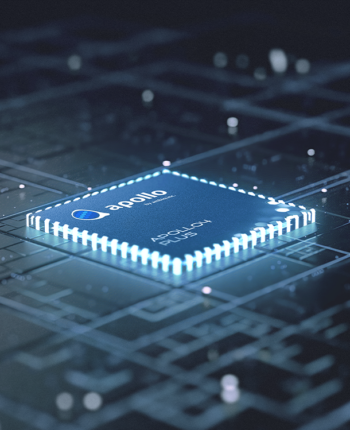Facts About Ambiq micro Revealed
Facts About Ambiq micro Revealed
Blog Article

Permits marking of various Strength use domains by means of GPIO pins. This is meant to simplicity power measurements using tools including Joulescope.
Generative models are One of the more promising methods in the direction of this intention. To train a generative model we first gather a great deal of information in certain domain (e.
You are able to see it as a method to make calculations like irrespective of whether a small residence must be priced at ten thousand pounds, or what sort of weather is awAIting inside the forthcoming weekend.
AI element developers face numerous specifications: the function must fit within a memory footprint, fulfill latency and precision necessities, and use as very little Strength as you can.
Apollo510, dependant on Arm Cortex-M55, provides 30x far better power efficiency and 10x speedier performance compared to former generations
Prompt: Animated scene features a detailed-up of a brief fluffy monster kneeling beside a melting red candle. The art type is 3D and sensible, which has a concentrate on lighting and texture. The mood on the portray is among marvel and curiosity, given that the monster gazes in the flame with vast eyes and open mouth.
Tensorflow Lite for Microcontrollers can be an interpreter-based mostly runtime which executes AI models layer by layer. Dependant on flatbuffers, it does a good task producing deterministic effects (a offered input provides precisely the same output whether working with a Computer or embedded process).
The library is can be utilized in two strategies: the developer can choose one of your predefined optimized power settings (outlined here), or can specify their unique like so:
For example, a speech model may accumulate audio For numerous seconds just before performing inference for the couple of 10s of milliseconds. Optimizing both equally phases is vital to significant power optimization.
the scene is captured from the ground-degree angle, next the cat closely, providing a small and intimate point of view. The image is cinematic with warm tones in addition to a grainy texture. The scattered daylight among the leaves and crops higher than produces a heat distinction, accentuating the cat’s orange fur. The shot is clear and sharp, by using a shallow depth of industry.
Basic_TF_Stub is a deployable keyword spotting (KWS) AI model based on the MLPerf KWS benchmark - it grafts neuralSPOT's integration code into the existing model as a way to ensure it is a working key phrase spotter. Pet health monitoring devices The code makes use of the Apollo4's minimal audio interface to collect audio.
Education scripts that specify the model architecture, prepare the model, and occasionally, complete coaching-aware model compression which include quantization and pruning
Welcome to our web site that should wander you in the earth of awesome AI models – unique AI model sorts, impacts on a variety of industries, and excellent AI model examples of their transformation power.
a lot more Prompt: A Samoyed as well as a Golden Retriever Canine are playfully romping through a futuristic neon town in the evening. The neon lights emitted through the nearby properties glistens off in their fur.
Accelerating the Development of Optimized AI Features with Ambiq’s neuralSPOT
Ambiq’s neuralSPOT® is an open-source AI developer-focused SDK designed for our latest Apollo4 Plus system-on-chip (SoC) family. neuralSPOT provides an on-ramp to the rapid development of AI features for our customers’ AI applications and products. Included with neuralSPOT are Ambiq-optimized libraries, tools, and examples to help jumpstart AI-focused applications.
UNDERSTANDING NEURALSPOT VIA THE BASIC TENSORFLOW EXAMPLE
Often, the best way to ramp up on a new software library is through a comprehensive example – this is why neuralSPOt includes basic_tf_stub, an illustrative example that leverages many of neuralSPOT’s features.
In this article, we walk through the example block-by-block, using it as a guide Energy efficiency to building AI features using neuralSPOT.
Ambiq's Vice President of Artificial Intelligence, Carlos Morales, went on CNBC Street Signs Asia to discuss the power consumption of AI and trends in endpoint devices.
Since 2010, Ambiq has been a leader in ultra-low power semiconductors that enable endpoint devices with more data-driven and AI-capable features while dropping the energy requirements up to 10X lower. They do this with the patented Subthreshold Power Optimized Technology (SPOT ®) platform.
Computer inferencing is complex, and for endpoint AI to become practical, these devices have to drop from megawatts of power to microwatts. This is where Ambiq has the power to change industries such as healthcare, agriculture, and Industrial IoT.
Ambiq Designs Low-Power for Next Gen Endpoint Devices
Ambiq’s VP of Architecture and Product Planning, Dan Cermak, joins the ipXchange team at CES to discuss how manufacturers can improve their products with ultra-low power. As technology becomes more sophisticated, energy consumption continues to grow. Here Dan outlines how Ambiq stays ahead of the curve by planning for energy requirements 5 years in advance.
Ambiq’s VP of Architecture and Product Planning at Embedded World 2024
Ambiq specializes in ultra-low-power SoC's designed to make intelligent battery-powered endpoint solutions a reality. These days, just about every endpoint device incorporates AI features, including anomaly detection, speech-driven user interfaces, audio event detection and classification, and health monitoring.
Ambiq's ultra low power, high-performance platforms are ideal for implementing this class of AI features, and we at Ambiq are dedicated to making implementation as easy as possible by offering open-source developer-centric toolkits, software libraries, and reference models to accelerate AI feature development.
NEURALSPOT - BECAUSE AI IS HARD ENOUGH
neuralSPOT is an AI developer-focused SDK in the true sense of the word: it includes everything you need to get your AI model onto Ambiq’s platform. You’ll find libraries for talking to sensors, managing SoC peripherals, and controlling power and memory configurations, along with tools for easily debugging your model from your laptop or PC, and examples that tie it all together.
Facebook | Linkedin | Twitter | YouTube